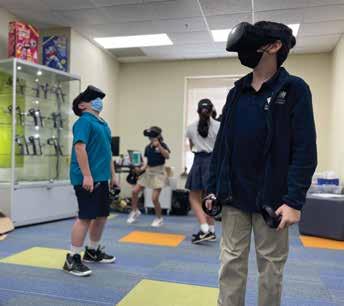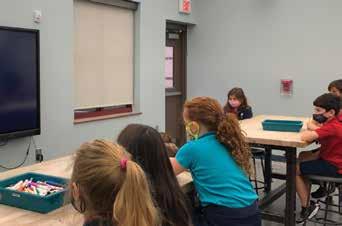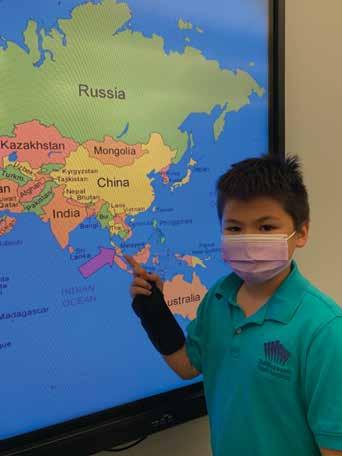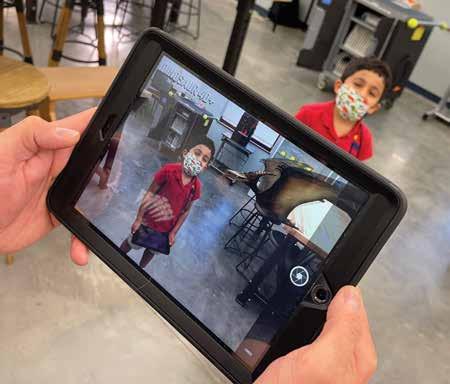
3 minute read
in Educational
The educational landscape is ever-changing and The Davis Academy continues to prioritize the evolving needs of our learning community. There are several trends that have been highlighted across the country since the onset of the pandemic and yet, they are themes that we have historically integrated into our learners’ experience. These trends include prioritizing the integration of online tools to support teaching and learning, the use of augmented and virtual reality to create experiential opportunities, especially as mobility is impacted by the global pandemic, and finally, expanding our students’ understanding of diversity, equity, and inclusion.
As a global economy, we are preparing students for roles that do not yet exist and as such, they must have the technological prowess to adapt rapidly and communicate cross-culturally. As a result, we continue to integrate the use of online tools into the teaching and the learning for digital fluency. Examples include the use of Flipgrid in Mrs. Cohen’s and Mrs. Stein’s eighth grade Language Arts class after students read Alice Walker’s short story “Everyday Use” reminding readers of how our heirlooms connect us to our ancestors. Prompted by the teachers, students used Flipgrid to share their own short videos describing their family heirlooms. Tools, such as Flipgrid, allow our community to connect through storytelling. Mrs. Bolnick’s fifth grade math students participate in digital escape room experiences with
Advertisement
A. During science, sixth grade students virtually go into a spaceship to experience a journey out of this world. B. Eighth grade students use Flipgrid to share the stories of their family heirlooms. B the help of BreakoutEDU. BreakoutEDU is a digital tool that challenges students to use clues to solve riddles related to their curriculum, such as order of operations. Students in Mechina through second grade are taught to use SeeSaw, a digital platform for student engagement. As an example, kindergarten students used SeeSaw to read a book entitled When Grandma Gives You a Lemon Tree, by Jamie L.B. Deenihan, which celebrates the joy of nature. Using SeeSaw, they practiced their handwriting and counting skills centered around the themes of the book.
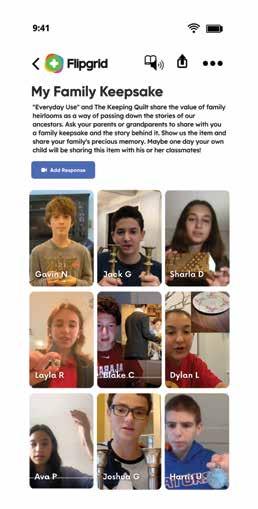
Another technological trend is the use of augmented and virtual reality to simulate an experience so that students are immersed in a three dimensional environment that reinforces the curriculum. For example, in eighth grade science, students explored the intricacies of the Oculus Quest VR headsets to first learn how to control them and how to manage the altered depth perception. Students were able to experience how objects in the virtual reality space can be moved and manipulated. As they were also studying mass, the First Steps VR app allowed students to explore the impact of gravity on mass. These VR headsets encourage active learning through movement and total immersion in an alternate reality relevant to the learning.

A third trend is leveraging the use of educational technology to expose students to diverse cultures in order to expand their diversity, equity, and inclusion (DEI) knowledgebase. One such example is a collaborative project in which third grade students and the fifth grade Library Ambassadors connected with students in the United Arab Emirates, Croatia, Iceland, Thailand, India, as some examples. Our Davis students researched fairytales and folktales that originated in the United States and created digital tools showcasing how these tales have shaped our society over time. With the creation of bookmarks, videos, and multimedia presentations shared digitally among these different countries, we were able to learn from their students just as they were able to learn from us.
The inclusion of these tools ensures that the learning can continue anywhere, as long as there is an internet connection. As such, we blend these tools into the on-campus learning experience so that our students are prepared for what the future may bring. Trends in educational technology will continue to evolve as the world around us changes. As new trends emerge, The Davis Academy is committed to curating and implementing best practices for our learning community.
C. Mechina students using VR to explore dinosaurs in prehistoric times. D. Sixth graders go on a very special field trip to space during Science. They virtually explored the moon and saw earth from a whole new perspective. E. Third grade students listen to a Malaysian 3rd grader sharing a talk tale to discover how the theme of loyalty has shaped their culture. F. Third grade student Conrad, proudly showing off that he was born in Malaysia. G. Eighth graders enjoy an exciting session of Digital PE with a variety of virtual reality physical education activities.
